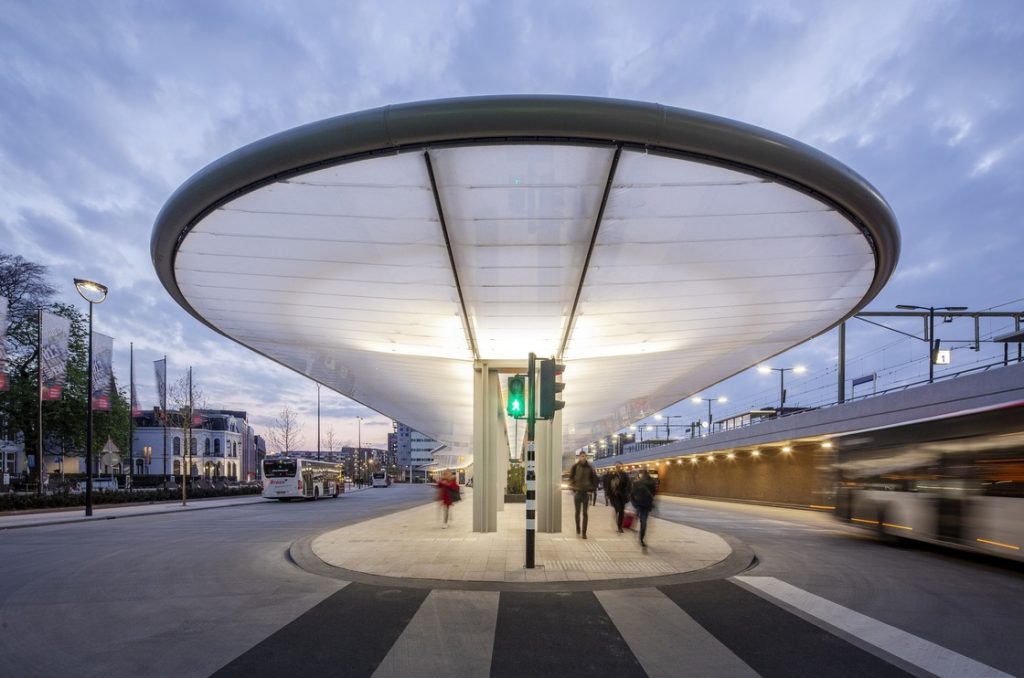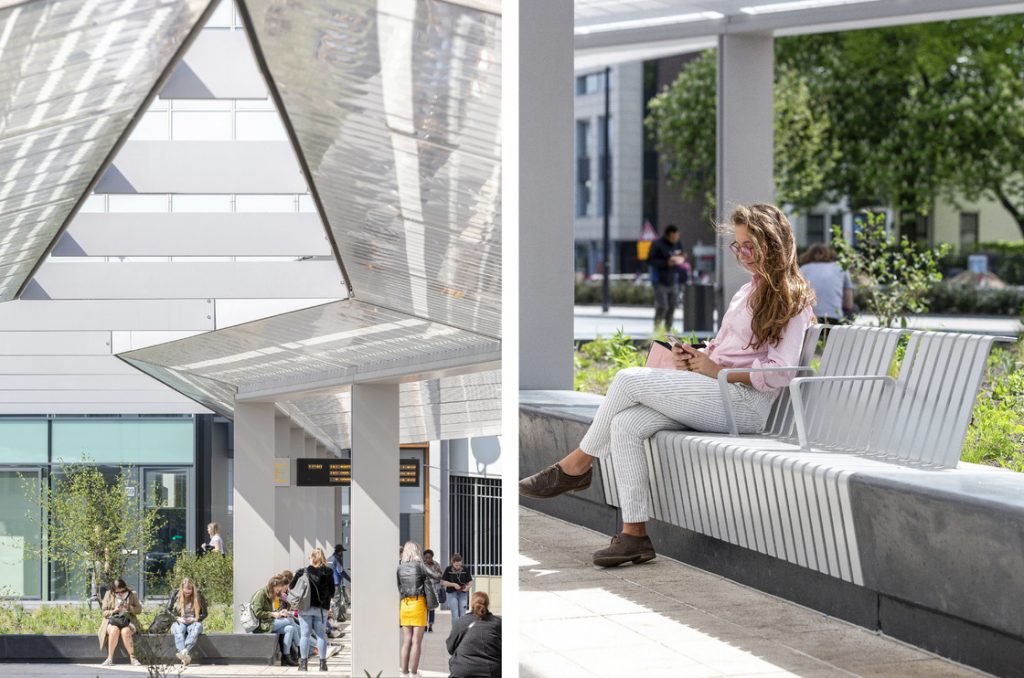Have you ever found yourself calculating how much time you have irreversibly wasted at public transport stops while waiting for “that bus” to come? But what if we tell you that some of these stops are so good that you wouldn’t mind waiting a little longer?

This minimalistic bus station in Tilburg may look quite ordinary, but this is where the looks are misleading. What you might appreciate is that this bus station designed by the Netherlands-based Cepezed studio is a self-charging terminal. Its awning is equipped with ETFE-foil housing that contains solar panels — it enables the construction to generate its own energy for digital information signs, the lighting, the integrated heating for waiting benches and a staff room.

Tilburg station by Cepezed
Though renewable energy systems as such are used quite widely, this bus stop is also equipped with movement sensors to detect the presence of buses or passengers, thus making sure that the lighting is used only when necessary, and keeping the energy consumption to the minimum. And the design icing on the cake created by the environmentally-friendly Cepezed team are the elegant benches that smoothly coalesce with their concrete base.

Next, we present you a bigger project which might become the perfect hub for such a revolutionary step in sustainable means of transportation as the Hyperloop. UNStudio has announced the plans to build their Hardt Hyperloop Hub and revealed the visuals. When designing this modern, adaptable and easily scalable station UNStudio considered not only servicing the passengers of the Hyperloop but also connecting various modes of transport, fresh produce suppliers and consumers, developing local communities, servicing urgent healthcare needs, etc. The hub will be powered by solar panels as well, while the construction methods and materials will allow regulating its internal conditions with minimum costs and efforts.

